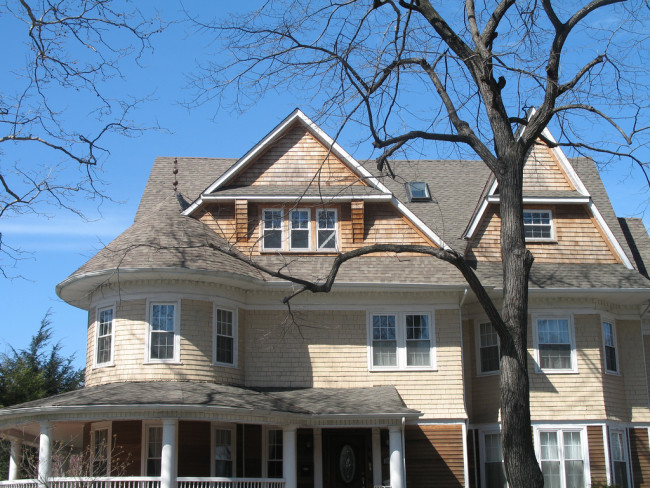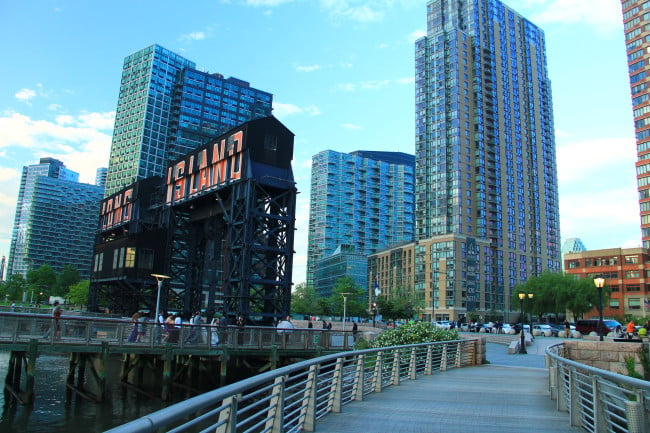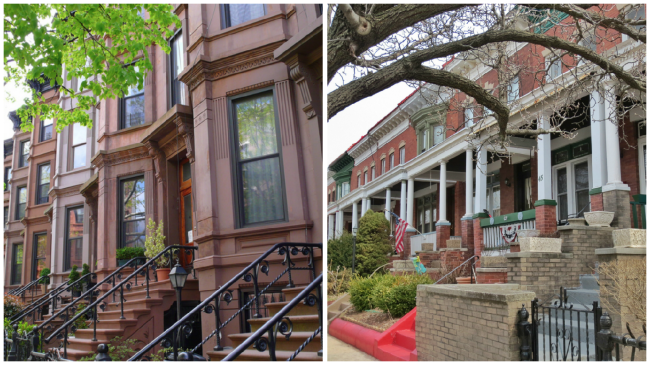Tribeca vs. Battery Park City: Which neighborhood is for you?
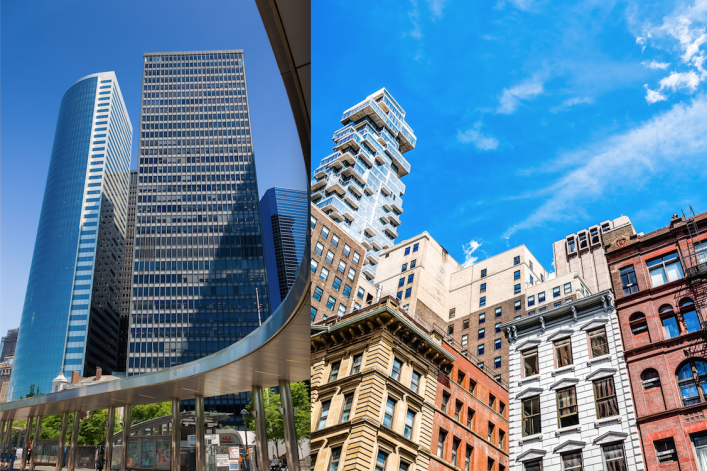
Tribeca has grown organically over the years while Battery Park is a planned community.
iStock
New Yorkers can get so deeply wedded to their neighborhoods that they find it hard to leave. Some buyers are deterred by the idea of moving, having to work out a new commute, leaving a friendly neighbor, finding a new school, or simply diving into the unknown—and the slowing market means renters are even less likely to budge.
When it comes to choosing a neighborhood to rent or buy, it’s important to get it right the first time. If you’re considering Downtown Manhattan, both Tribeca and Battery Park City will be on your radar. Both border the Hudson River and require a sizable income if you intend on living in a market rate apartment or are moving to the area with kids. The areas are also distinct from each other, with very different personalities.
Which is why we decided to have the two neighborhoods face off. Other articles in our Neighborhood vs. Neighborhood series include Park Slope vs. Windsor Terrace, Kensington vs. Ditmas Park, Washington Heights vs. Inwood, Astoria vs. Long Island City and Astoria vs. Forest Hills.
Tribeca has grown organically over the years while the development of Battery Park City was strategic.
“Tribeca is obviously a very old neighborhood that’s gone through a transition," says Anthony Notaro, a member of the Manhattan Community Board that includes both Tribeca and Battery Park City. He's lived in the area for 20 years. "Many of the buildings are historic and landmarked. Battery Park City was a planned community and it has many of the benefits of being planned—but when you plan out a community you are not always thinking of parking, garages, restaurants, and services.”
In this friendly neighborhood face off, we’ll dive a bit deeper into the housing, community and vibe of these two areas. And of course, if you're familiar with either, feel free to weigh in with your own opinions. You can find us on Twitter @BrickU. (Be sure to check out the other neighborhood comparisons in this series: Ditmas Park vs. Kensington, Astoria vs. Long Island City, Park Slope vs. Windsor Terrace, and Washington Heights vs. Inwood.)
Tribeca
Neighborhood boundaries: The area got its name from the phrase, Triangle Below Canal so it's northern boundary is Canal Street to Lafayette and Broadway. The western perimeter is the West Side Highway along the Hudson River and Tribeca’s southern boundary is Vesey Street.
Transportation: Plenty of subway lines converge in Tribeca, so getting to either side of Midtown, Uptown or Brooklyn will generally be a direct service with no changes. For subway stops you’ve got Canal Street, Chambers Street, Franklin Street, Park Place, and World Trade Center served by the A, C, E, N, Q, R, W, 1, 2, and 3 lines.
There are few neighborhoods in Manhattan where parking is easy—and it’s no different for Tribeca where the Community Board fields many parking-related complaints. Another issue is the traffic around the Holland Tunnel, which Tribeca residents say clogs up the neighborhood as it backs up during rush hour.
Real Estate: The current median asking price for a three-bedroom unit in Tribeca is $5,695,000 and the median monthly rental for a similar unit is $15,625. That’s double the rent of a two bedroom which is $7,800. If you can get by with a studio, the median asking price is $1,750,000 and the median monthly rental of a studio is currently $3,800.
Tribeca used to be a manufacturing and industrial area and in the 1980s, developers snapped up warehouses and converted them, pulling in an edgier, artistic crowd.
Notaro says apartments in Tribeca "are known for their large footprints, so you have more bedrooms, people with families and also because some of them are larger and upscale, you have people with larger incomes and a diversity of livelihoods.”
Much of the neighborhood is landmarked, which has made it harder for developers to muscle into the area, but not impossible—30 Park Place built in 2016 and the redeveloped Woolworth Tower Residences are two recent examples. Patrick Mills, a broker with CORE, says a typical Tribeca buyer is looking for a unit with character.
“Even the new developments tend to be a little edgier and have a lot of personality. Just look at 56 Leonard, the "Jenga building." It’s one of the most interesting buildings, it’s beautiful, has changed the skyline forever and certainly stands out. That’s Tribeca,” he says.
Living: It goes without saying, you’ll need funds for this neighborhood. According to Bloomberg’s annual ranking, NY 10007 in Tribeca just landed the fifth spot in America’s richest zip codes.
Famous for its cobblestone streets, loading docks, wooden water towers, and metal awnings, the area gives a glimpse of what New York City used to be like, but it's also a mecca for hip shopping and fine dining.
If you’re moving to the area, expect your neighbors to have second homes in the Hamptons and live chic, creative lives. Many come from wealth and can take advantage of all that the area offers. Even if that’s not "you," it’s a scene that’s a quintessential part of New York, and you get to see it in your neighborhood.
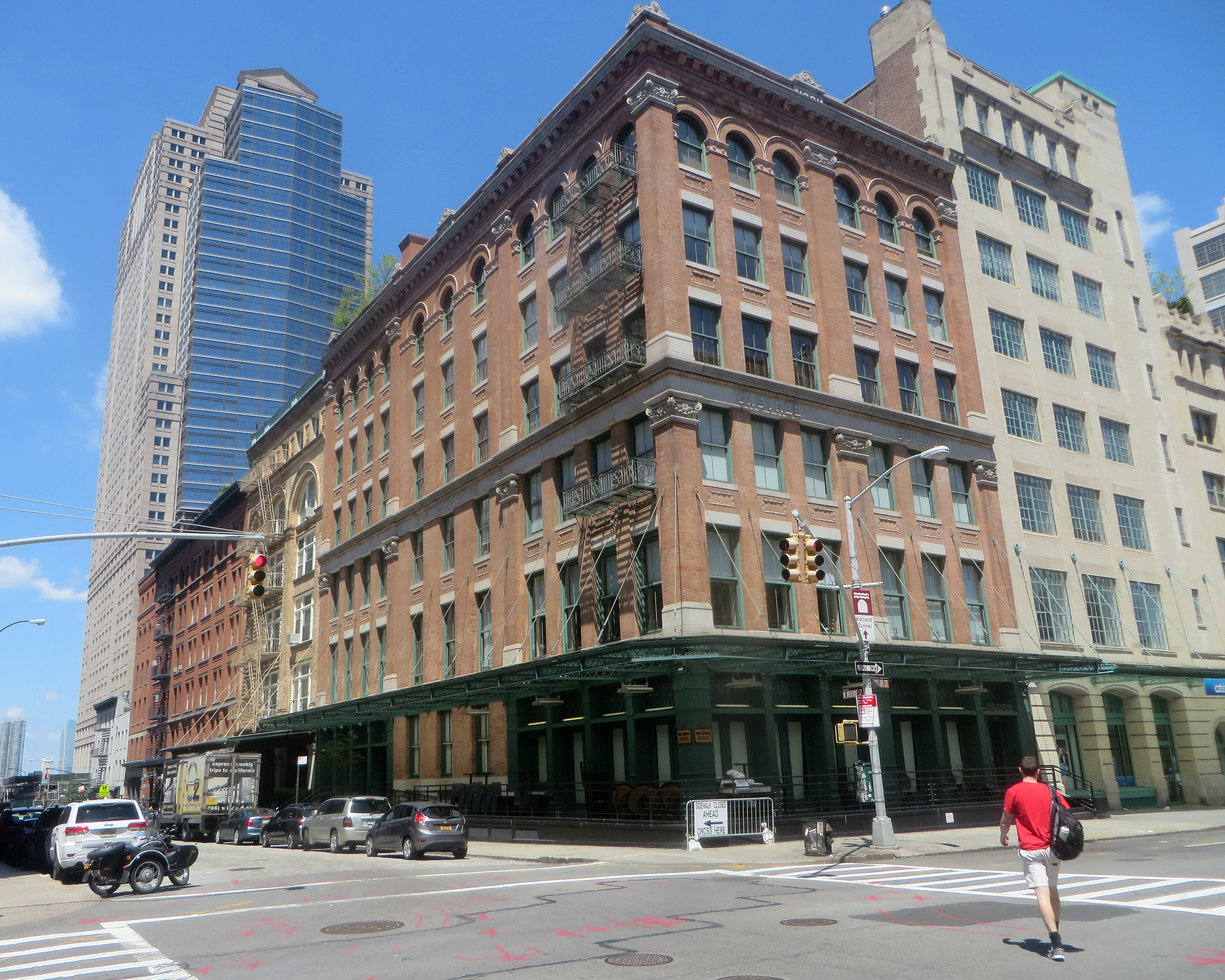
A typical Tribeca resident might have outgrown the West Village, says Mills.
“They are holding onto the grit and artistic energy and the history of the Downtown life.” That’s what’s offered by Tribeca’s industrial buildings—lofts with enviable square footage, which is what you’re looking for when you start a family and want to stay in Manhattan. Mills says, “1,500 square feet is not a lot for the rest of the world but it’s a lot for a family in NYC.”
Mills says the gentrification of the area has really taken off in the post-Giuliani years, ushering in "some of the best private schools, some of the best public schools. It’s not a surprise when you see this old industrial neighborhood turn into a vibrant, family-focused neighborhood. At the other end of the spectrum you have super famous, A-list celebs who could also be your neighbor.”
This isn’t an area that’s humming til 6 a.m. though.
“You could certainly say, because of the location and the price of living there, it’s a more mature neighborhood than the West Village, Chelsea or Hell’s Kitchen,” Mills says. He thinks that energy has moved Uptown or out to Brooklyn. The nightlife in Tribeca is confined to upscale bars rather than a raucous party scene.
Perhaps because it’s a residential area and because many families are out of town come Friday night, the weekends are fairly quiet in Tribeca. You’re not going to be waiting in line for two hours for brunch as you might in the West Village.
Eating and dining: One of the consequences of living in such an upscale area is the restaurants are pricey, even though many are kid-friendly. Bubby’s and The Odeon are popular with families. For stellar falafel try Nish Nush. Tribeca is perhaps less eclectic than it once was but most residents are still willing to pay a bit more for an interesting if casual dining experience—think Atera where fine dining meets sensory theater with 16-course dinners, prepared before your eyes. “Just because it’s casual doesn’t mean it’s going to cost less,” Mills says.
Area gems: The area isn’t flush with museums or theaters but Elite Gymnastics offers a top-notch gym program and Church Street Music is the area's only non-profit school for the arts. There’s also the Downtown Dance Factory and the Manhattan Youth Community Center. One resident with school-aged kids tells us Brooklyn Game Lab is a welcome addition and the Robot Factory seems to be hanging on. "We could use more day camps and after-school clubs like those,” she says
Pier 25 is popular with families and has mini golf, a cafe and volleyball courts as well as a sailboat in the summer. There’s also Washington Market Park, which has a playground and offers a series of summer concerts. In the dead of winter, parents of little ones will appreciate the neighborhood’s members-only indoor toddler space, Play Garden.
Local celebrities: There's no shortage of celebrities taking advantage of the Downtown lifestyle. Probably the most famous resident and unofficial mayor is Robert De Niro. Taylor Swift, Beyonce, and Jay Z are at 195 Hudson. 443 Greenwich is home to Jake Gyllenhaal, Justin Timberlake, Jennifer Lawrence, and Meg Ryan—and that’s just one building.
“Most celebs are drawn to that West Village vibe but you can’t really find something as big there so they’re in Tribeca where it’s more paparazzi proof,” Mills says. He says Tribeca has fewer tourists and “real New Yorkers aren’t going to stop a celebrity in the street—you just move on with your life.” (You’ve been warned.) Tom Brady and Giselle bought at 70 Vestry, which has an interior courtyard where a car can pull in for enhanced privacy.
Battery Park City
Neighborhood boundaries: Battery Park City is a slice of reclaimed land in Manhattan between the Hudson River and West Street, aka West Side Highway. The neighborhood runs from Chambers Street in the north to Battery Place and Little West Street in the south.
Transportation: There are no subway stations in the Battery Park City neighborhood. Train access is in the Financial District and Notaro says in some cases you have to walk a quarter of a mile to the nearest subway.
The FDR and Westside Highway make it accessible if you drive but also explain why parking and placard abuse is an even more pressing issue for this area than it is for neighboring Tribeca, according to Notaro. The lack of subways means the Downtown Connection shuttles are a boon for residents.
Real Estate: Battery Park City is slightly more affordable than Tribeca with a median sales price for a three bedroom of $3,125,000. The median rent for a three bedroom is $11,000 and for a two bedroom, $6,950.
As a planned city, Battery Park City’s housing stock, in general, have less character than those in Tribeca. The properties are beautiful, Mills says, though they “feel more pragmatic and cookie cutter than in neighboring Tribeca.” In the north, there are mainly large brick apartment blocks. The southern section contains complexes like the waterfront residential apartment building, the Gateway Plaza, which was completed in 1983. The Soliare, a LEED-certified building, and the country’s first green residential complex, opened in 2002.
One of the neighborhood’s premier condo buildings is 225 Rector Place, which was redeveloped in 2012. “It’s a very nice, very standard, straightforward, luxury product, with standard floor plans, beautiful views of the Hudson River and Statue of Liberty, but not as much personality as units in Tribeca,” Mills says.
Living: Residents tell Brick living in Battery Park City is like living in the suburbs while in the city.
“The really wonderful thing about the area is that you’re in Manhattan but your kids can ride their bikes down the promenade,” one resident told us. One third of the area is designated parkland and there’s a sense that it’s an island on an island. “West Street cuts us off from Manhattan,” Notaro says.
“I’ve always felt it feels like a really nice college campus, because it’s very clean, there’s a sense of uniformity in terms of the architecture and the urban planning,” Mills says.
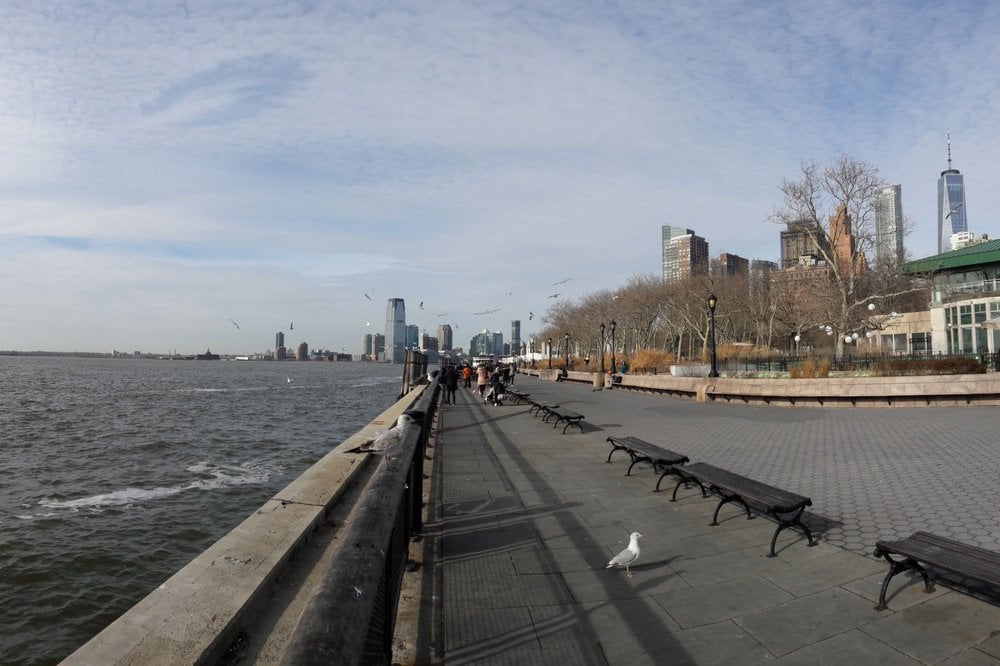
A typical Battery Park City buyer, Mills says, is more committed to the practical than the artistic.
“It’s someone who likes the convenience of the area, who likes to walk to their office in the Financial District, someone who likes to run along the highway but it not so attached to the heart and soul and grittiness of New York City,” he says. The Financial District is just across the West Street Highway and the area has attracted other banking institutions like Goldman Sachs, which is headquartered in the northern part of Battery Park City at 200 West Street.
The biggest changes have come to Battery Park City since 9/11. Notaro says the rebuilding and development means the area is now on the map as a destination within Manhattan.
“The development of Brookfield Place brought major improvements,” he says. Other residents echo that assessment, saying it has great dining options and always has something going on for the kids. Even so, a major issue for the area is resiliency. Notaro says, "We are vulnerable because our community is surrounded on three sides by water and much of the waterfront is landfill and that’s a pressing area of concern for us."
Much of the Community Board's discussions are about keeping up with the area's growth.
"The population of lower Manhattan has doubled in 10 years, and that’s putting a put a lot of pressure on services like sanitation, public safety, and school seats," says Notaro.
Like Tribeca, Battery Park City is quiet on the weekends. If the vibe in Tribeca is chic casual, Battery Park City is more athletic casual. Apparently, that extends to parenting style as well. Residents tell Brick parents are a little bit more laid back. “It still has a good balance of parents wanting the best for their kids but not making it all about them,” says one resident.
Eating and dining: While Tribeca’s dining scene is upscale casual, Battery Park City is a little more formal. Much of the dining happens around Brookfield Place—think Michelin-starred French cuisine at L'Appart. For more casual eats there's Tartinery Hudson Eats.
Area gems: Residents of Tribeca and Battery Park City share facilities like Asphalt Green and the Manhattan Community Center that caters to both neighborhoods.
The Regal Entertainment movie theater is very accessible and rarely crowded. There’s also Rockefeller Park, which is popular with residents. Other gems include Super Duper Tennis, the farmers' market by Bowling Green station which is “small but great,” according to one resident, and the area by the Staten Island Ferry, which is a good place to stroll and take in the rotation of interesting public art by Pier A.
Local celebrities: The waterfront Riverhouse apartment complex is home to supermodel Tyra Banks, Leonardo DiCaprio, Cobie Smulders and her “Hamilton” actor-husband, Taran Killam, as well as director Oliver Stone.


















